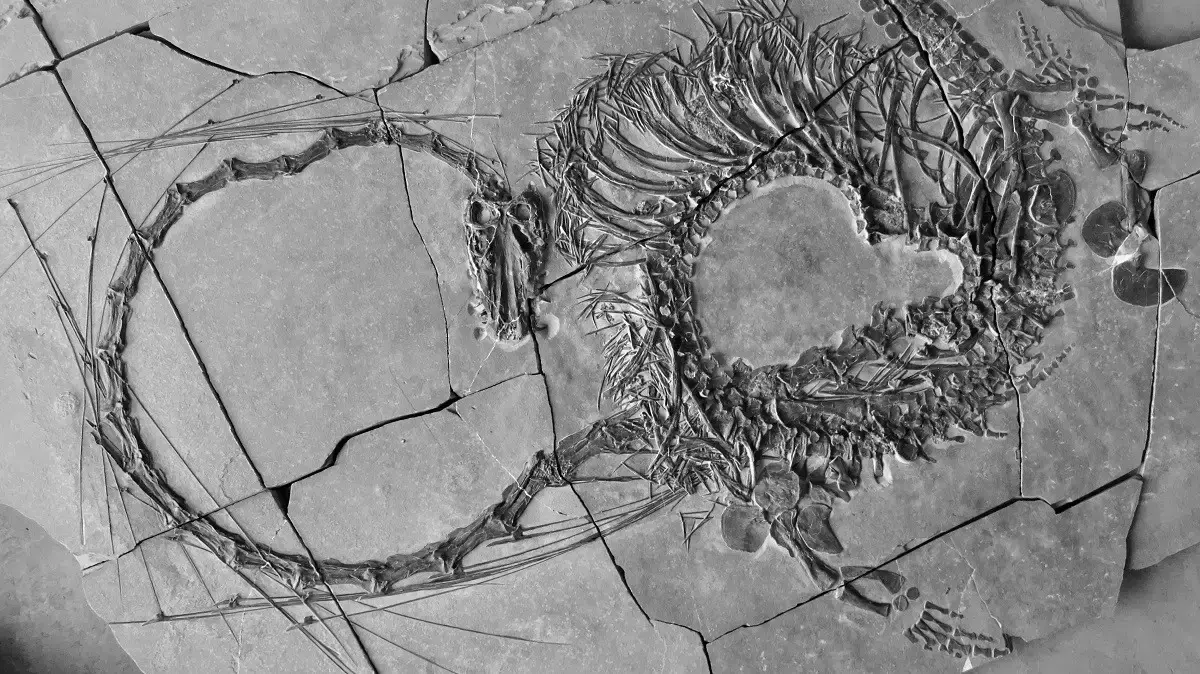In Argentina they discover the largest winged reptile in South America 0:49
(CNN) --
Fossils of a flying "Dragon of Death" have been discovered in Argentina, new research has revealed.
Scientists have unearthed partial remains of a colossal pterosaur, named Thanatosdrakon amaru, which is new to science, according to research published in the journal
Cretaceous Research
.
The ancient reptile lived in the Late Cretaceous period 86 million years ago, and is the largest pterosaur species ever discovered in South America, said study author Leonardo D. Ortiz David.
He is the general coordinator of the Dinosaur Laboratory and Museum of the National University of Cuyo in Mendoza, Argentina.
In Greek, Thanatos means death and drakon means dragon, Ortiz David said.
"Amaru was chosen as the name of the species because it represents an imposing deity in the cosmovision of some aboriginal peoples of South America," he said.
advertising
Scientists unearthed the largest pterosaur ever found in South America.
New study aims to seal dispute over whether dinosaurs were hot or cold blooded
Two different specimens were found in 2012 in the south of Mendoza in the Plottier Formation, a set of sedimentary rocks that contain remains of sauropods, theropods, turtles, crocodiles and pterosaurs, said Ortiz David.
He had been working in the area for 12 years and was surprised to find the remains of the pterosaur, which are rare in the outcrops where he worked, he said.
These flying reptiles belong to the pterosaur family called Azhdarchidae, and they have large heads, elongated necks and short bodies, he said.
The wingspan of both specimens is 7 and 9 meters, respectively, according to Ortiz David.
The larger specimen has an upper arm bone while the smaller one has much of its body, legs and wings, said James Kirkland, a Utah state paleontologist with the Utah Geological Survey.
He did not participate in the study.
"This is a very impressive discovery, as the bones of giant azhdarchid pterosaurs are very fine and delicate and very few are found, especially since they live indoors," said Kirkland.
The animal also has a proportionally large head, but Ortiz David said he doesn't know its purpose, if any.
Kirkland also doesn't know the reason for the huge head, but the corresponding beak could be used for eating, he said.
"The long, toothless beak could have been used to swallow smaller prey whole, as pelicans do," Ortiz David said by email.
How to see the pterosaur
A life-size model of the pterosaur is on display at the Dinosaur Laboratory and Museum in Mendoza, Argentina.
The fossils are preserved in the Mendoza Dinosaur Laboratory and Museum.
The public cannot see the specimens because they are so valuable, but casts of some of the fossils from the two specimens were made for display in the museum, Ortiz David said.
A life-size reconstruction is also on display, he added.
ArgentinaDinosaurspterosaur






